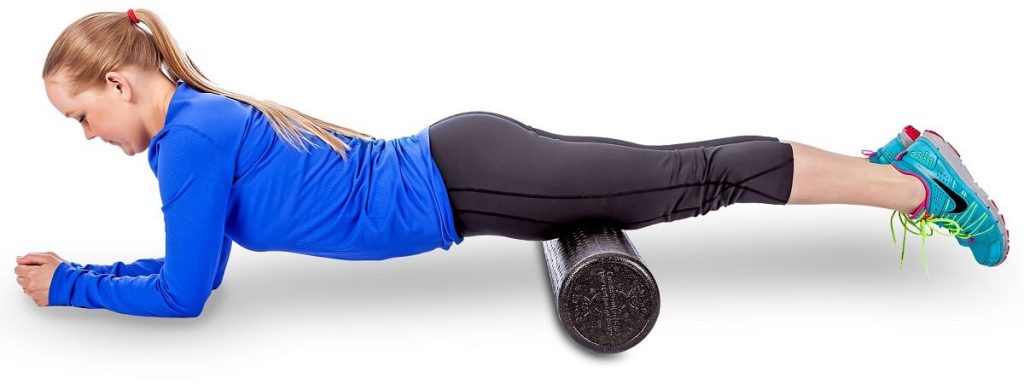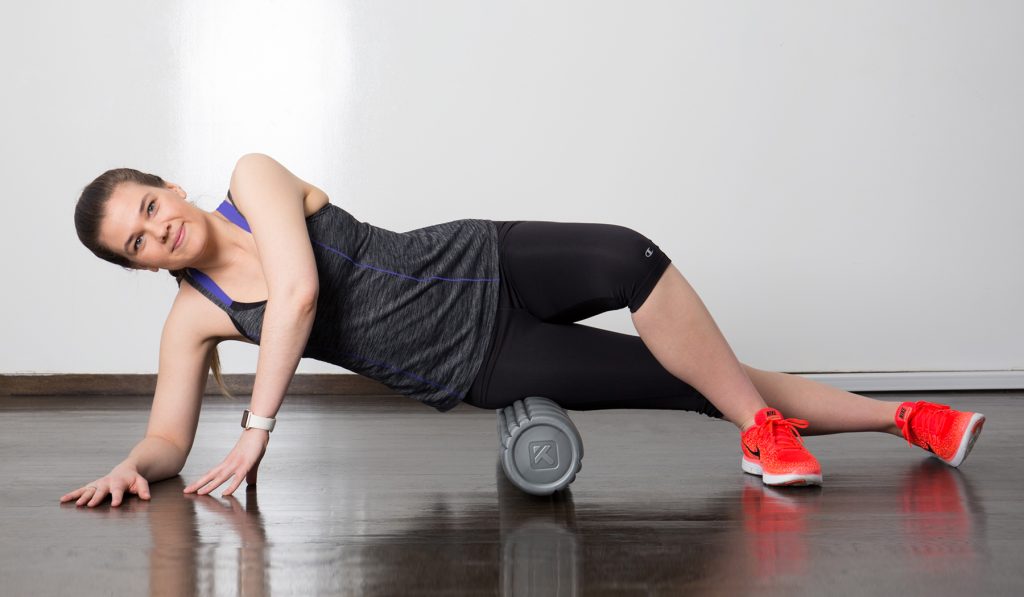
Have you ever been in the stretching area of your local Anytime and noticed a circular piece of foam just sitting there? We have too! You don’t have to spend thousands of dollars with your local massage therapist to get a good deep tissue treatment. Today, we dig into what a foam roller is, how to use it, and why it’s beneficial for your workout routine!
What Is Foam Rolling?
Foam rolling is a self-myofascial (http://en.wikipedia.org/wiki/Myofascial_release) release technique used to alleviate muscle pain and increase blood flow. It uses body weight to generate direct pressure to the “knots” or trigger points in the body. Often thought of as an “athlete’s only” piece of equipment, the foam roller is a great tool for anyone needing to release muscle tension (and we ALL have a bit of muscle tension from sitting too long, exercise, or general tension). Imagine using a rolling pin to roll out lumps in bread dough and you’ll get the picture.

What Are The Benefits?
Rolling is beneficial before and after your workout. Foam rolling prior to a workout can help decrease muscle density and allow for a better warm-up. Rolling after a workout can aid in recovery from a strenuous exercise. Other benefits of self-myofascial release include:
- Improvement in joint range of motion
- Ease of muscle soreness and joint stress
- Help in maintaining functional muscular length
The Product
The roller is a foam cylinder and it comes in a variety of sizes. Most commonly in the gym setting, you’ll see a longer roller, measuring 36 inches with a 6-inch diameter. The density of the foam can vary as well. If you’re new to foam rolling or have particularly tight muscles or trigger points, opt for a softer foam roll. Typically, white rollers are softer, while blue or black rollers tend to be firmer.
Key Points for Foam Rolling
Rolling can be effective for many muscles, including calves, hamstrings, glutes, quadriceps, hip flexors, latissimus dorsi (http://en.wikipedia.org/wiki/Latissimusdorsimuscle), and the thoracic spine (http://en.wikipedia.org/wiki/Thoracic_spine). Place the foam roller under each muscle group and roll, long strokes, for 60 seconds until a tender area is found. Once a knot is found, maintain pressure on the knot or trigger point for 30 to 60 seconds by moving back and forth over that surface area. Follow up by performing a stretch for each muscle group you just have rolled for maximal benefit.

Tips for Foam Rolling
- Sometimes, it hurts so good! Foam rolling may be a little uncomfortable and that’s ok. Stick with it!
- Spend at least one minute per area when you foam roll to make sure you’re making an impact.
- Find a friend to hold you accountable to foam rolling after a workout. Think of it as your new cool down!



